There are at least a dozen SHTF scenarios where your life can be saved by having an underground bunker built. Therefore, creating a well-thought-out bunker is a must for every experienced survivalist.
While building a bunker isn’t easy, after it’s finished, you’ll have the peace of mind that comes with knowing you and your family will be safe no matter what happens.
The article below provides a general overview of what you will need. I’ve also provided additional resources that provide more in-depth information.
Table of contents
How to Get Started?
Regardless of what you are building, you’ll need a building permit. This means that the construction process must meet your state’s codes and laws. Otherwise, you may face lawsuits and fines.
Planning is the most critical part of the construction.
Before you start any excavation, you will need to ensure that you are legally allowed to dig a big hole in your backyard. There may be gas or water pipes buried on your property, which you’ll want to avoid.
Create a Plan
As a survivalist, you know how important the planning process is going to be. This is especially the case when building a bunker. You’ll need to work out every detail before you begin.
There are going to be many questions before you begin the construction planning.
What type of soil do you have?
Will you need to break through concrete?
Where is the water table?
These are just a few questions.

The illustration above is pretty elaborate, but bunkers can be as complex or as simple as you want them to be.
When you’ve considered the numerous factors – mold, type of soil, ventilation, radiation, natural gas pockets, etc. you can determine what kind of bunker you’d like to build.
Some people work from under their homes, while others consider building a bunker separate from their house.
Advantages of Having a Bunker Built Separately
Creating your bunker under a separate building has advantages and less worry about some issues.
- You won’t have to worry about breaking through the concrete
- Gas installations, or accidentally
- Stumbling upon electrical installations
- Compromising your homes foundation
Additional Resources
If you are not skilled in planning construction projects, you might even want to consider hiring someone to help.
Advantages of Having a Bunker Built Under Your Home
We have mentioned some disadvantages of building an underground bunker in your home, but what are the advantages?
- First, creating a bunker under your home will allow for easy access to electricity to start.
- Additionally, building a bunker under your home will allow for much easier access to the bunker itself.

The entrance should be easily accessible, and you shouldn’t need to leave your house to get there. If it’s underneath your home, you can consider using the basement as an entrance.
Keep in mind that you will want a separate entrance. You don’t want to be trapped in the bunker. Therefore, this entrance should not be easily seen and possibly even separate from your home.
Digging
If you’re legally allowed to dig and understand your local zoning laws, you’re ready to start.

As you remove soil from the hole, stage it nearby so you can use it later.
The excavation should be larger than your bunker, so you have room to work and build.
Building the bunker will require heavy machinery. You can hire someone or do it yourself, but keep in mind that others will know where your bunker is located if you use contractors.
Structure
There are several options for the bunker structure itself.
- Container – Steel Shipping containers make good bunkers. They can be purchased in multiple sizes, and combined to expand into a larger complex if needed.
- Tank – Large underground storage tanks also make good underground bunkers.
- Concrete – Concrete means you are probably building your bunker yourself. This will require more planning, although it may be less expensive in the long run

If you use wood, know that it will likely decompose. Even if the wood is treated, wooden construction is not suitable underground. Treated timber has toxins that will release gradually into the soil, which will be bad for your structure. It will also probably not be strong enough to support the system that you’ll need.
Passages
Passages from your home to the bunker are helpful for alternative access. However, the tunnels’ support needs to be well researched and very strong to support the walls and ceiling.
Scaffolding poles are a good option for the walls, as they will give the small rooms the support they need. However, avoid using these poles to support the ceiling because they may not be strong enough to prevent collapse.
Obstacles
When planning and building your bunker, there can be many obstacles.
- Underground water
- Gas pockets
- Electric wiring
- Rocks and debris
- Radon
Underground water can be a problem, and you will probably need to move your excavation, but it can also be a significant benefit. With the proper filtration and purifying system, you can provide water for the bunker.
Gas pockets are usually either methane or natural gas. These can be very dangerous, and you should contact a professional if you suspect these exist anywhere near your excavation.
Electric wiring needs to be located before any digging begins. Therefore, having a professional do a ground survey to find any power lines is essential.
Rock and debris are not usually an issue with good heavy equipment, but excavating can become expensive if you have to break through a lot of rugged ground.
Radon is often naturally occurring and an issue in some parts of the country. In addition, some homes require Radon remediation systems in their basements, so this is something that should be checked if you expect to spend large amounts of time in your shelter.

Initial assessments, before starting to dig, will make the process simpler and less expensive.
Security
Bad weather is one of your biggest enemies in an underground bunker. Rain can seep into almost any size crevice, and this needs to be prevented. Consider using a waterproof sheet or membrane over your bunker to help protect it from seepage.
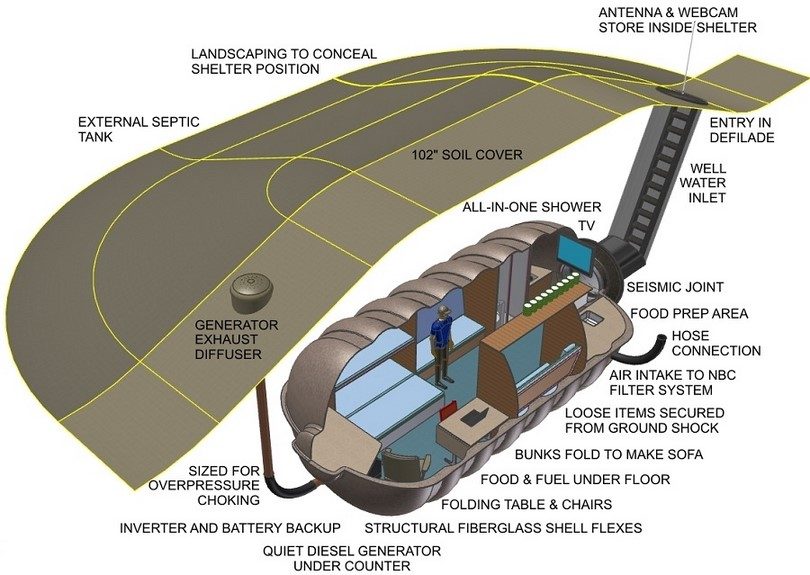
There are a few other steps to take if you want to keep your bunker secure.
- Create a secret entrance, and a secondary entrance. Both of these entrances will need to be hidden from curious eyes.
- If you are building the bunker separate from your home, plan to camoflage the ground over the bunker.
- You will have exhaust piping for air, etc., and this should also be hidden. You can extend the piping away from the house and up into trees so it is hard to locate, but keep in mind that you will need larger pumps and generators to move the air or exhaust.
Additional Survival features
There are many features to consider for your bunker and many considerations when planning out your compound.
How long do you want to plan to live in the bunker in a worst-case scenario?
What type of weather do you have in your part of the country?
Is there naturally occurring water?
Questions are almost endless, so make a list and think through your structure.
A few additional features to consider.
- A water source or supply system – underground water or rain. You will need a filter and purification system or method. You can check out this article on the most effective gravity water filter and consider life straws as a back-up for shorter term emergency situations.
- Food will be very important, and there are MANY options, but make sure the food you purchase has a very long shelf life and provides the nutrition you need. I’ve listed some options below.
- Emergency Kits can be purchased (MyMedic offers very good options) or you can create one yourself, but this will be important to have in your bunker.
- Electricity is going to be important, and how you provide it is a big consideration. Will you use solar, propane, geothermal? There are many options, and once you decide consider a master electrician to handle the wiring and installation.
- Ventilation is a must-have since being able to breathe is important. Not only should you do quite a bit of research on ventilation systems, but you also need a back up solution if the system fails.
Long Term Food Options
 | Nutrient Survival | Shop Here |
 | Augason Farms | Shop Here |
 | Valley Food Storage | Shop Here |
 | Ready Store | Shop Here |
Pre-fabricated Bunkers
If you don’t want to build your bunker, there are a lot of options. Numerous companies build bunkers – elaborate and straightforward.
These companies will plan and build your bunker end to end, completing the bunker itself and all of the internal features and structures.
Additional Resources
If you really are interested in preparing for a worst-case scenario and building your own bunker, these books are good resources.
FAQ
This depends on the size and features you want, but you can plan to spend anywhere from $500 – $3,500/sq ft. Once your plan is completed, you will have a much better idea of the cost.
Earth, especially packed earth, is a natural insulator for radiation. You don’t want to go too deep, though, as you may need to dig yourself out if tunnels collapse or doors are blocked.

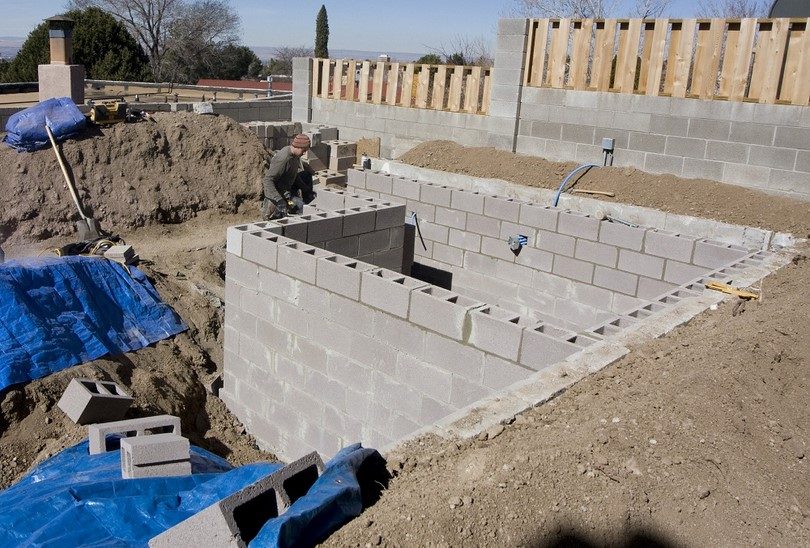



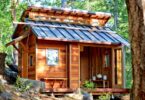
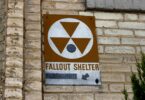
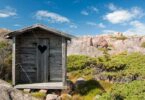

Though building an underground bunker is useful in times of need, I am very skeptical about the safety measures. Even with a perfect planning, the outside factors like the condition of the soil can have an impact on the safety of the bunker. Isn’t that so?
To eliminate any and every threat, specifically from the surrounding soil, I think it is a good idea to encase your underground bunker in reliable steel.
I love the idea of having a safe place to fall back into in case of emergency. I do have a basement filled with survivalist gear, but reading this article makes me want to go one step forward, and build a fully functional bunker.
Go for it, Peter. You never know when you will need a bunker to save your family from the jaws of Mother Nature. People living in places where natural disaster rarely occur may not appreciate the importance of a bunker. But once you build one, you perception will certainly change.
Knowing how to build a bunker is absolutely a life saver.
Propane generator, as there is no shelf life for propane, easy to store in large quantities–ditto buying it, it also can heat, hot water and cook with it. Large galvanized steel conduit is great for shelter, 10-12′ diameters down to 6 foot, easy to bury, outfit and relatively inexpensive.
Battery technology is improving all the time, be careful about flooded lead bats–they don’t last and are difficult to handle. LI-on when they get whole house batts done would be the way to go. If you go wind generation–don’t go cheap–you will regret it. Pay attention to wind speed vs. generated current–many don’t achieve there rating unless wind is 34+ MPH–how often is that???.
Water is the key, freeze-dried food is readily available, and not half bad.
Rain water? Depends the threat. Chemical or nuke–not such a good idea.
Thanks Capt. Steve for your insightful thoughts and contributions. There are specific things that you have mentioned which are worth emphasizing on, such as wind speed vs. generated current and the safety of rain water. Great views.
I like the bunkers built by the nazis during WWII concrete with rebar, real thick. What I would like to do for my bunker is have a double wide modular home in a concrete bunker. With underground water, diesel, septic tanks with proper ventilation. Granted the size of the bunker would be about twice the size of the double wide itself , with other areas of the yard for storage of all the water and fuel tanks and suck. I figured out a thickness of about 5 feet of concrete , waterproofed, back up solar panels , 2 wells tankless hot water heater. There will even be enough room for an astro-turf yard with an above ground pool, and a large food storage area.
A well-built underground shelter is a defensive fortification, engineered to protect the occupants from bombs and natural disasters. So, if you can build an ancient design, such as the ones used during World War II, then go for it.
This is great thinking Michael, we are glad we could help.
This article inspired me to build a bunker for the safety of my family. I mean, if I already have a basement to rest, why should I not move ahead and build a bunker that would provide the safety to me and my family. Although, I have a question “My house is just by a small hill. Can I make a bunker in the hill like a cave or something like that?”
The most immediate and recommended place for building a bunker is your basement because you might not have enough time to run to the hills when a disaster is imminent.
I am a bit confused between a bunker and a storm shelter. Should I build both of them underground separately or there is an option where I can do both of their tasks? I am very cautious about the safety of my family. Any advice from your experience would be very helpful.
The best option is to build an underground bunker.
What about EMP blast and underground farming? Please advise..
A well-built bunker should be able to offer you the required protection against EMP. Heavy-duty and high performing bunkers feature steel and concrete designs.
Thanks David. Big fan of your knowledge and writing skills. Cheers
Great informational content. For food storage you can use canned foods (especially those with water), you can store them anywhere. An idea to keep in mind would be to also install a fridge unit if you have power in your underground shelter. It’s necessary to make sure you have lots of food and water, just in case.
Building a bunker may seem to be the most difficult thing, but it is not as challenging as stocking it with the right supplies for survival. However, you need to come up with a heavy-duty bunker first before you can think about stocking it with supplies.
I am glad our content has been helpful to you. Feel free to check out our other publications for new content on survival bunkers.
If you have the possibility to do so, you can build your underground shelter into the side of a mountain or steep hill, it’s a good choice for people who have the possibility to do so. You don’t require that much work in this case, and the steps that need to be done are fairly typical to successfully complete your shelter.
You should keep track of what supplies you have in your underground shelter when you organize it, knowing the basic needs, like how long you could remain in your shelter, water amounts, and food storage per person. Also, you should have a radio that can communicate worldwide so you can stay informed. I will add up the information that I learned from this article to what I already have and use it to do something suitable for my shelter within my budget.
Is there any efficient way to recycle used water and maybe even urine? There is no way you can survive long enough without water. You can build your own water supply system, but what if the water gets contaminated. You never know how much you have to stay in your underground shelter in case of an emergency. It would be a good idea to come up with such a system when you build a bunker.
Good thinking, Reed. Water is essential for any emergency situation. So, you definitely need some kind of water system or storage. Also, remember to stock water filters, purifiers, and tablets. Just in case the water gets contaminated.
Building the best bunker is just the first step. The second most important step is stocking it with essentials. Usually, most of the things that you can stock depend entirely on your budget. Make sure you have all the life-sustaining essentials.
A hillside is better compared to flat terrain. However, the flat terrain seems to be the most convenient choice. The benefit of a hillside is effective drainage. So, no risk of flooding.
Building a bunker is the safest way to keep your family safe from disasters. I am planning to build one on my backyard. I have been searching for ideas in terms of materials. As I read, searched, and interviewed few friends, most of them suggested that I should use shipping containers. However, I am not convinced because it might not be suitable to be placed underground. What could be my other possible alternatives?
The world we are living in is quite unsafe. This is the main reason why I want to build a banker under my garden or backyard. My husband suggested that we need to build something durable from any types of busters. Though, the idea was practical, I still wanted to know if this is possible. Do I need a special type of material? And, how much would I probably need to realize my dream?
My house is built a few miles from a river. So, I have this idea of building a bunker under the nearby river. This way, I get an endless supply of water and less detection from an intruder. However, this is only a plan that I have in mind. I wanted to know whether this is possible.
My garden is just so fascinating to look at; no one will ever think it has some secret place beneath it. Of course, this is my dream. I wanted to build a bunker underground to keep my family safe in times of disastrous events. However, before anything else, I would like to know the best things to consider in building one.
The basic considerations are: location, self-defense, power source, sewage, entry, air filtration, and comfort, which are discussed in detailed in the article.
Building an underground bunker under a river or a lake is an interesting undertaking. There aren’t many individuals who have built such bunkers and shared their experiences. But, it is always good to try new ideas. However, it will be wise for you to employ the expertise of underground bunker professionals.
The materials you can use to build your underground bunker can range from steel, reinforced concrete, wood, stone, and cement block. You can always include other usable materials.
A shipping container is a usable suggestion. But, a stronger and more reliable construction can be achieved with reinforced concrete, steel, and cement blocks.
The top bunker design is absolutely hilarious! It’s a strip club!